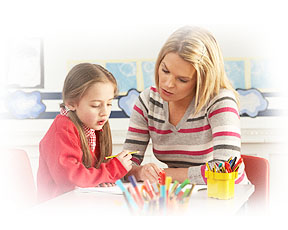Solutions
Intervention
 My clinical focus encompasses but is not limited to the following areas. Parents are a child’s greatest asset, trained to facilitate goals at home. For many of these challenges, progression through the language hierarchy is targeted which may vary from sounds, to words, phrases, sentences, and finally conversation, aiming for criteria at each level. To ensure carryover, criteria must be attainable in both drill/structured practice as well as daily natural contexts.
My clinical focus encompasses but is not limited to the following areas. Parents are a child’s greatest asset, trained to facilitate goals at home. For many of these challenges, progression through the language hierarchy is targeted which may vary from sounds, to words, phrases, sentences, and finally conversation, aiming for criteria at each level. To ensure carryover, criteria must be attainable in both drill/structured practice as well as daily natural contexts.
SPEECH:
Articulation-phonological-motor speech disorder: The client is directed towards target sounds or patterns (i.e. final consonant production) through different levels of support, depending on what is needed, i.e. listening, watching or through touch (see Prompt method under ‘My Training Highlights’). Relevant core vocabulary words are selected and practiced most. The child is directed towards improved organization of movements resulting in improved sound production. This may be based on a sound by sound approach, or error pattern, or the hierarchy of speech development from jaw to lip-facial to tongue control and finally coordination of all these sub-systems in various directions.
Stuttering: A whole child approach is used, focusing on both the overt speech symptoms and more importantly on the client’s attitude-belief system about his speech and the emotional impact this has on communication. My goal is effective communication through desensitization to the stutter, education, and strategies to assist the client to speak more fluently while stuttering and to alter his habitual way of talking. Strategies taught to speak more fluently are physiologically incompatible with the stutter, reducing the muscle contractions that lead to the dysfluency. Frequently, the obvious speech symptoms are merely the tip of the iceberg, with negative emotions rooted underneath.
Voice-Resonance: Some clients may abuse their voice, leading to swelling, vocal nodules/blisters on the vocal cords. Therapy here will be directed towards identifying these abuses, educating the client about healthier alternatives and putting healthier voice habits into action, using healthy voice strategies. For the child who directs too much air through the nose, such as those with cleft palate, sounds will need to be directed orally and more forward in the mouth.
Language: Intervention may include strategies for any of the 4 language modalities of listening, speaking, reading, writing. Often, the therapy has 3 prongs, self-advocacy, accommodations by others to assist the client, plus direct teaching of new skills which will allow the client to compensate or learn new skills. For example, if comprehension is challenged, the child may request a repetition or ask a wh question. A teacher may speak more slowly or simplify her language in order to facilitate understanding. Vocabulary may be expanded using categories and items within groups. Grammatical rules such as past tense forms may be explicitly taught. Stories/narratives may be taught using a visual organizer, to prompt recall of sequence and details. For language challenged children, modeling is often insufficient. If a child has trouble retrieving words from long term memory that are known, he might learn to use different words rather than become frustrated or say nothing, or delay may be an option. Learning language in social contexts may include targets such as: using a variety of intentions for communicating, as well as listening, turn taking, watching, sitting, sustaining attention, introducing-maintaining-closing topics, or learning manners through social scripts using pictures paired with words. Finally, for the child who struggles with written language, he may need to learn his code explicitly, to assist with reading and spelling. Vocabulary or grammar building strategies may be needed or paragraph composition through visual organizers. Both reading comprehension strategies and written formulation can be taught explicitly by modeling the process out loud, then through shared reading or writing, and ultimately towards independence. Written language presents the greatest multitasking requirement of all the language modalities.